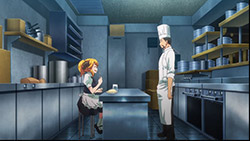 |
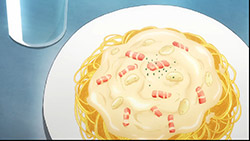 |
 |
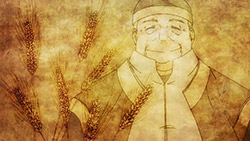 |
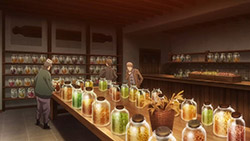 |
 |
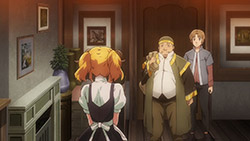 |
 |
 |
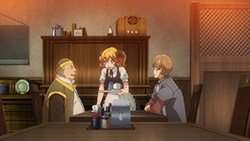 |
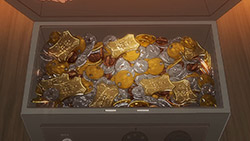 |
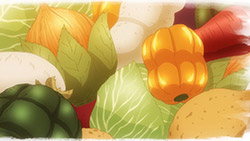 |
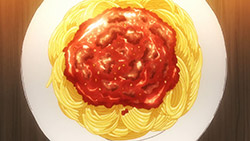 |
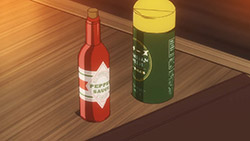 |
 |
 |
 |
 |
 |
 |
 |
 |
 |
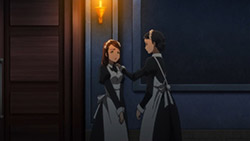 |
 |
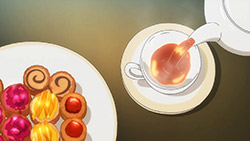 |
 |
 |
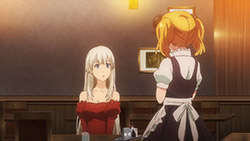 |
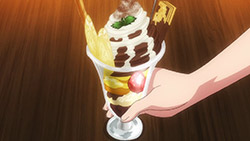 |
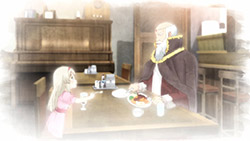 |
 |
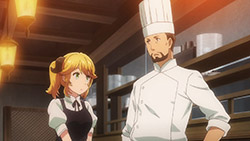 |
 |
 |
 |
「ミートソース/チョコレートパフェ」 (Miito Sousu/Chokoreto Pafe)
“Spaghetti with Meat Sauce/Chocolate Parfait”
Beyond a focus on food, the common theme between the plot threads in this episode of Isekai Shokudou revolved around grandfathers. I wouldn’t say the relationships were particularly explored in depth, rather an emotional impression in time bringing so much meaning to a singular experience. This unique take fits well with an episodic format, and deserves praise as well as examination. Without further ado, full steam ahead!
Grandfather’s Sham
The grandfather made pasta and the sauce cheap and available for everybody, accruing incredible personal wealth as a result of completely ripping off the food technologies he witnessed from Earth. Speaking of which, wouldn’t it be crazy if some owner of a mega-corporation in our world was secretly an isekai protagonist from another world using life hacks? I thought it was really interesting that Isekai Shokudou explored sham coming from the other way. You could say the grandfather gained cheat powers by simply having the fortune of knowing Nekoya, in the same way many isekai protagonists are fortunate in carrying over useful abilities from a previous life (or gaining them in the process of reincarnation). If you ignore the wish fulfilment aspect and all the cynics who tell you it’s pointless, I think there is so much meaning to be gained in improving the lives of others, even if you are an inferior intermediary rather than the source sauce itself.
A Memory of Grandfather
Adelheid’s story deals with bereavement. Considering how her parents were not particularly present in her life, it stands to reason that gramps would be the person she was closest too. He did what he could to make his granddaughter happy, including taking her to eat at Nekoya when she was very young and alone, which is why his passing hit her very hard. Tenshu’s sensitivity towards other people’s problems really warms the heart and soothes the soul. This week, we see how he understood Adelheid’s mere description of ‘clouds’ to be the chocolate parfait that she wanted to consume as comfort food. Mind you, he had only met her once, and was still able to remember. Fortunately, eating a chocolate parfait in Nekoya recuperates her spirits, bringing back nostalgic and good times for her. It’s true that precious memories of good times spent together really helps ease the process of dealing with grief. Think of visiting Nekoya as ongoing therapy for her loss, giving her a mechanism to cope with her difficulties.
We also get a confirmation that Tenshu inherited the restaurant from his own grandfather, who used to be the head chef in Nekoya himself. Hopefully, we’ll get some elaboration regarding this background later on in the series. From what we’ve seen, it’s clear that the man had a huge influence on shaping Tenshu to be the way he is today.
Concluding Thoughts
I thought it was really. awesome that Tenshu remembers his customers and their favourite foods. If a restaurant went that far for me, I’d be a surefire customer for life, as we could see from previous customers here in the omake. I thought it was nice to see all the customers seen so far in the series return, and perhaps it signifies the end of a particular arc. What I’m alluding to would be upcoming appearance of the moon girl, who I am absolutely curious about.
Judging by the previews, it doesn’t look like she’ll appear all too soon. However, I’ll be sticking around to cover Isekai Shokudou until the end, including that point. Too bad, dear readers. Not only will you be stuck with my random musings that sometimes make no sense, you will also have to endure witnessing my terrible attempts at replicating food items from this show. Followed by the subsequent rounds of pretentious critiquing. Bon appétit!
Omake
 |
 |
 |
Preview
 |
 |
 |
Friend’s Spaghetti Bolognese feat. Zaiden
My friend made a dinner of spaghetti bolognese where I acted as a sous chef, helping prepare stuff and providing suggestions regarding what to add. Lo and behold, it turns up in Isekai Shokudou! Good thing I can include that one here right now, though pictures will have to come later since I need to source them from this same friend I speak of, who is currently asleep.
No recipe, a lot of hands on improvisation. Who would have thunk that in addition to grated parmesan, the secret ingredient to making amazing pasta was Tabasco! Considering me and my friend added bell peppers, grounded peppercorns and lemon juice to our bolognese sauce, which greatly elevated the flavour, I’m actually not too surprised. The tartness of the tomato, the sourness of lemon, the natural sweetness from the onions and carrots, the bitterness of the bell peppers, all served to balance each other out. By the way, you should grab your Parmesan from over the cheese counter in a supermarket, because it’s a lot fresher and nuttier compared to the chilled section. Now that I think about it, Parmesan to Italian cooking is what Soy Sauce is to Asian cooking.
Final Verdict: 6/10 – Somewhat above average. Needed to stew longer for the vegetables to release more flavour, and possibly the use of white wine to impart a richer flavour to the mince. But tasted good, and I reckon I’m being harshly biased due to my preference for creamy sauce pasta.
Zaiden’s Menchi Katsu
Followed Cooking with Dog’s Recipe for the most part, and I imagine the result was above average, given the juiciness of the mince and the crispiness of the coating. Extra style points for successfully replicating the shredded cabbage garnish, but also lost because the katsu was slightly browned, as opposed to golden. But the lack of real tonkatsu sauce takes away from the authenticity – while trying to make it from scratch, my lack of Worcestershire Sauce meant I had to fall upon other less orthodox ingredients to work as a substitute.
Final Verdict: 6.5/10 – My best piece of work so far. Then again, actually expected since I have a great affinity for fried foods.
Hyper Japan’s Ebi Fry
While I didn’t make this dish myself, I visited a convention called Hyper Japan last weekend. Figured I didn’t have time to make my own Ebi Furai, so settled for the next best thing. Anyway, I bought three pieces of Ebi Furai for £3 ($4). I know, stupidly expensive, but I love my fried foods.
While the ebi furai tasted delicious, with the battering being exquisite, the prawn itself was pretty dry and lacked in succulence. No tartar sauce to complement the dish also means I have to lower the score.
Final Verdict: 4.5/10 – Needs better prawns and an actual inclusion of tartare sauce, but logistical limitations understandable given that food was being mass produced to feed the humungous queue of people.

https://randomc.net/image/Isekai%20Shokudou/Isekai%20Shokudou%20-%2003%20-%20Large%2011.jpg
i’m still not understand what’s the business deal between tenshu and the pasta grandpa,isn’t it rather overpriced for a bag of isekai ingredient? considering the assumption of exchange between “silver” and yen is 1:1000 and “gold” to “silver” maybe 1:100…it means 7 piece of “gold” equivalent to 700.000 yen not counting the silver yet.
yeah thats the only thing that irked me too, this is like way overpaying for a bag of ingredients, even if they are from another world
that guy made a huge business empire by copying Nekoyas taste and he cant sell veggies for otherworld market price? thats harsh
unless everyone in that world goes veggie shopping with a small chest of coins
inflation there must be really harsh if thats all the food you get for that amount of coin(including gold)
I’d guess that a lot of the ingredients being purchased are fairly exotic, given that Tenshu’s using this supply strictly for research and development purposes. It also sounds like it’s not a straight payment for the delivered quantity, but rather a percentile cut of profits as part of a larger business deal.
… Plus, now that I think about it, Tenshu probably doesn’t have much use otherwise for the other world’s currency? It’s not like he can convert it to yen that easily, so Nekoya’s business on the Day of Satur might be just a matter of tradition (given the flashback with the former owner) or a research effort into new tastes and recipes that Tenshu expects to write off as a loss since he still uses Earth ingredients in the dishes.
For a moment, I thought that their “deal” was that Mr. Pasta-Man would exchange the other world’s currency earned by the restaurant for something valuable to the owner (for a cut, that is). But if it’s a single payment for some ingredients… It still seems too much.
I suppose that the original source material explained things in more detail, right? Is there a reader of the LN who can shed light on this issue?
Say you stumble across an expensive item that generates more profit than it costs to bring over. There’s an opportunity in the market, that you would happily take. He made a huge business empire and this amount of money is probably small pittance to him. Also, perhaps think of some rich person going to a restaurant making an insane tip on top of a bill, as a gesture of goodwill.
@zaiden: whom do you meant by giving insane tip? Tenshu? Or the grandpa? Are you sure not getting them mixed up?
@purplebomber: hmm well maybe if the spice on isekai kinda rare…though I feel it’s still not worth it though(my merchant blood boils)…I’m only see tenshu hurting his business and it’s more insane if tenshu not found how to utilize that isekai currency other than to pay the grandpa and aletta. hahh~ but well this is a light novel typical a super-kind Japanese can bypass any type of business problem with ease hahaha.
To be honest I think sales/financial success is outside of this series’ scope and never meant to be anything important, it’s more about how the food affects the people and their interactions within the shop.
I think we need to keep in mind that, even here on Earth, up until the 20th century – where international trade became a viable norm – produce that weren’t locally available were considerably expensive! Some were even worth their weight alone in silver or gold! Grapes, Strawberries, Bananas, Pineapples, corn, potatoes, celery – things we simply walk to the grocery store for today – these things were EXTREMELY expensive and rare for people to get their hands on if they weren’t able to cultivate them locally.
Taking into consideration the way most of the dimensions we’ve seen, I doubt many of them are beyond medieval Europe or Early Meiji Era Japan in terms of cultural/technological advancement. Fresh produce, many of which were likely difficult to procure I imagine, is likely expensive as all hell in that particular world.
Plus, I imagine that the chef overcharges most of the interdimensional patrons in terms of costs anyway. IE 1 silver coin for a plate of katsu curry rice. 1 Silver Coin, 1500 USD. 1 plate of katsu curry rice, 15 USD.
I like how a simple change in medium makes me see the story in a completely different light. When you read the LN for this, they’re mostly episodic chapter-by-chapter tales about a customer and their respective meal with maybe a bit of slow-burn story progression in the mix.
And while the anime is largely like that as well, the mere fact that they can choose two stories to bundle together in one episode allows them to frame a theme of some sort for that particular instance and allows the viewer to witness those themes as two seemingly unrelated stories in the LN are used to bounce off each other in an episode in the anime. Looking back at it now two weeks ago, it really is interesting seeing these vignettes get subtly reinterpreted just by being placed next to each other.
We see this in the first episode where a wealthy all-powerful dragon lord is contrasted with a homeless half-demon.
In the second episode where we see how ephemeral and yet also enduring the restaurant/doors are to time as an adventurer realizes the greatest life-long treasure of her predecessor or when a knight’s sword goes back to him after nearly half a decade of absence.
And here in the third episode where we see not only the theme of grandfathers passing things on to their heirs but also how those of the upper caste covet/use the doors in their own peculiar ways.
Real good shit, I say.
Hey Folders. That’s some really interesting insight to hear about! I’ll be on the lookout for themes in the future episode, and I quite like the format that the anime have gone with. Very smart adaptation, and a very simple change that really strengthened the way in which the story is told.
Oh next episode is going to be a treat then. I like how they paired up the Elf/Lizardman stories together, very good call.
And while I’m at it. I just really fucking adore this sort of subtle world-building and character-building through the eyes of the customers. God this show is just hitting all the right places for me and its the perfect show to start a Monday with.
https://randomc.net/image/Isekai%20Shokudou/Isekai%20Shokudou%20-%2003%20-%20Large%2002.jpg
Spaghetti with white sauce, button mushrooms and bacon slices? It’s similar to a spaghetti dish I love to eat (and usually call carbonara, even though it possibly isn’t), just replace the bacon slices with diced and sautéed ham slices, as well as minced and sautéed bacon bits. Very dee-lish nonetheless. :-P~
https://randomc.net/image/Isekai%20Shokudou/Isekai%20Shokudou%20-%2003%20-%20Large%2007.jpg
Is it strange that the old pasta trader reminds me of Uncle Iroh? (Avatar: The Legend of Aang)
https://randomc.net/image/Isekai%20Shokudou/Isekai%20Shokudou%20-%2003%20-%20Large%2032.jpg
I’m impressed that Pricess Adelheid somehow felt a lot better after eating a chocolate parfait, despite being implied to be suffering from some kind of illness. (She was shown coughing in one scene, and it is possible her grandfather’s passing made her ill.) To return to the pink of health after simply eating a chocolate parfait stretches my willing suspension of disbelief somewhat, but in fairness, I’d crave something sweet as well after recovering from an illness.
Also, I mistook her voice for that of Mamiko Noto or Saori Hayami. (Actually, she’s voiced by Reina Ueda according to MAL.) That said, DAYUMN! Aletta has some competition now… Everything’s better with princesses in this case.
That also made me wonder, does the princess suffers an incurable illness or just a normal cough? May the great LN readers answer this question.
From the description of the disease she’s suffering from in the LN as a respiratory disease, and how it’s called both there and here (“Pauper Killer”), most people have deduced that she’s suffering from Tuberculosis. Incidentally, without access to modern antibiotics, TB was apparently remedied in the past mostly through clean air, rest, and isolation, both of which is what Princess Adelheid got.
The choco parfait she ate was really more to ease her depression at her perceived incarceration, rather than a cure for her disease.
Hey Incognito! Funnily enough, I had freshly made Carbonara for lunch yesterday. I prefer pancetta, though I run bacon on a budget. Throw in some garlic and shallots for aromatics. Also, using just egg yolks to make the sauce and avoiding cream makes for some really delicious sauce.
My favourite Italian dish to order in a restaurant would be some past ‘Ai Funghi’, which is basically Carbonara with mushrooms without the pancetta. Sautéing the mushrooms in garlic and sherry, then boiling it in chicken stock before adding cream, makes for some really earthy and rich taste that I can totally get behind! Think I might add pancetta next time though, as I kind of realised that it’s eschewed to create a dish suitable for vegetarians.
Isekai Tuberculosis, that is.
Another delicious and comfy episode! But I think there’s a thing that lacks in this episode. The customers don’t interact with each other like in the first episode. I guess when there are more customers they will start interacting.
https://randomc.net/image/Isekai%20Shokudou/Isekai%20Shokudou%20-%2003%20-%2030.jpg
Oh well, gonna to to the nearest cafe and order a cup of cloud!
Having read your post after making my own, I’m wondering now if the magical mechanism that controls the restaurant door is somehow sensitive to the circumstances of the diners. This week we had someone with an infectious disease and someone who was basically a fraud – it wouldn’t have been too good to have other people around at the same time.
“This week we had someone with an infectious disease ”
Her disease isn’t infectious though, or at least has a very low rate of transmission. Also, we do see the Princess with the restaurant full in the post-credits scene.
Judging from her symptoms and what the maids were saying about her condition, though, what she really needed was probably a course of rifampicin! Oh, and avoiding crowded places like restaurants would be a good idea too as she could easily infect other people.
But back to the “food” again. There were so many culinary solecisms this episode that I can’t even be bothered to list them all. I’ll just say that never, never, NEVER use the abomination that is dried, powdered cheese because it’s rancid before you even buy it. Any restaurant worthy of the name would always have freshly grated Parmigiano Reggiano or Grana Padano.
I wondered if you might have gone there. Looks like they were trying to cook too many prawns at a time to feed the queues and so the oil temperature had dropped. Really hot oil fries the batter quickly and the moisture from the batter then gently steams the prawns, but if the oil is too cool then by the time the batter is cooked, the prawns have got far too hot and become dry and tasteless. But more importantly, WHO PUT NICO IN THE TRASH???
Angelus, I was actually wondering what the dried parmesan was about. Have to agree it’s an abomination that smells like socks and vomit. Still tastes good, but doesn’t have that fresh and rich nuttiness. Would you suggest anything better than over the counter cheese? It’s been a complete revelation, but I would be happy to hear about someplace higher.
Indeed I did go to Hyper Japan on a press pass from RandomC, so expect a post in the future. I mostly went around taking photos of cosplays, one of who was Nico. I asked her to stand away from the bins, but she replied that it wouldn’t matter, because Nico was trash anyway. So that photoshop was more of a reference to her than anything.
I made Menchi Katsu a second time with my leftover mince, and making many at once did produce a less crispy coating, which I would associate with the lower oil temperature. That said, it seemed they premade the ebi furai and stored it in one of those warm areas that retain the heat of food. So possibly not having the ebi furai freshly deep fried was a contributory factor.
I don’t think you can get better than Parmigiano Reggiano, although I have used Pecorino Romano (the aged or “stagionato” type) occasionally for a change. Being made from sheep’s milk, the Pecorino has a much sharper flavour, which some Italian chefs apparently prefer, but I don’t think it keeps as well.
That was a shop? I thought someone had taken a Nico standee and binned it! Looking forward to your post on Hyper Japan, though.
On my God. I do not even know where to start.
– Tabasco? Lemon?? Bell Peppers??? Why people can’t understand that the key to Italian cuisine is parcity in the selection of the ingredients? The stars in ragù alla bolognese are the meat and the tomatoes – the recipe is designed around enhancing their flavour, not “complementing” it with different flavour profiles! This is the same as putting pineapples on pizza! (one of the greatest abominations known to man – just look Gordon Ramsay’s recent video on youtube…)
– Next time, try to use fresh tagliatelle instead of spaghetti. Spaghetti pairs poorly with such a rich sauce.
– You don’t use white wine, you use red wine, haven’t your parents taught you: meat dish = red wine? I suppose this is the effect of having a 21y drinking age…
– What is important with cheese is to not buy cheap American generic parmesan cheese, and instead only rely on original, imported Parmigiano-Reggiano. The American varieties tend to be aged too little and poorly, which results in bad texture (among other problems). Of course, I am not even considering the pre-grated version – that thing might be suitable for animals, but certainly not people. Properly vacuum-sealed and refrigerated pieces of Parmigiano-Reggiano are totally fine. Note that it has be to important, since by law (at least in the EU) the cheese can only come from the region of Emilia Romagna in Italy.
– I cannot comment on soy sauce, but implying that Parmigiano-Reggiano is ubiquitous to Italian cuisine would be a grave mistake. Northerners are somehow more likely to use Grana Padano. Try to use Parmigiano-Reggiano in a Carbonara dish – you will get shot in Rome.
Disclaimer: Italian who has been living in North America for over 10 years.
For reference, I didn’t actually use Tabasco. I was talking about the flavour profile, and how it could be similarly generated through ingredients like lemon juice or bell pepper. As for enhancing flavours, UK tomatoes can only take you so far. They’re pretty rubbish, and we don’t have ingredients like Pomodoro tomatoes. So you’ve got to rely on all kind of crutch methods to enhance the flavour, especially if you’re making it from scratch like we did without jar sauce.
While I did consider buying tagliatelle, I still had spaghetti at home. They only sold supermarket brand Tagliatelle at our Sainsbury’s, which is pretty bad anyway, so I didn’t see any point in expending money just for a pasta shape.
The ragú alla Bolognese is such a classic staple of regional cooking in Emilia-Romagna that in 1982 the recipe was set down in stone by the Accademia Italiana della Cucina (The Italian Academy of Cuisine).
As per the academy’s website the official recipe calls for:
“300g beef pulp (folder or belly or fesone shoulder or spindle) coarse milled, 150g of pork bacon, 50g of yellow carrot, 50g of celery, 50g of onion, 300g of tomato puree or tomatoes, ½ cup dry white wine, ½ cup whole milk, a little broth, olive oil or butter, salt, pepper, ½ cup liquid whipping cream (optional)”.
As a university student with parmesan on hand, I also didn’t see the point of buying a separate block of Pecorino Romano. Call my palette somewhat less sophisticated, but I really like the taste of Parmigiano-Reggiano. I know Carluccio or Marco Pierre White aren’t necessarily authentic, but they call upon the use of parmesan in their Carbonara recipes. I’m not exactly an expert. I’m just a university student who is interested in learning how to cook, and try out new things. If the taste of the food is great I don’t see a reason to complain.
Now this is what I was trying to avoid when I said I wasn’t going to list the culinary solecisms 🙂 But seeing someone else has started on it:
You seem to be confusing ragù alla bolognese with its Anglo-American derivative. And it does have white wine, the “red wine with red meat” thing (which I hope is what you meant) is far from a hard and fast rule in most cuisines, Italian included. It should also have milk and cream. And chicken livers, at least in the recipes that I’ve researched over the years. The very fact it has milk products shows that it shouldn’t have red wine, and it shouldn’t have too much tomato either. Google has done its best on that translation of the Accademia recipe, but the original calls for passata, which is much thinner than tomato purée. The end result can be quite dry and almost crumbly, a world away from what most people think of as “bolognese sauce”.
I do agree with you about the tagliatelli, though.
I did get around to using the pasasta! We added cream, although my friend was quite against adding milk. Just too bad that Sainsbury’s didn’t stock anything other than their supermarket tagliatelle.
I usually add cream at the end rather than cook it with milk, but that’s only because I’m also cooking for someone who doesn’t like milky/creamy things.
Don’t worry, I also added the cream at the end. Though on the contrary, I’m someone who loves pasta with creamy based sauces!
I don’t have much experience cooking a bolognese sauce, but one of my favorite pasta sauces to make is a tomato sauce where I’d cook onion, shallot, and garlic in a pan, mix in some crushed tomato, and then stew it in either crushed red pepper or chopped up hot peppers for spice. I know white wine goes good in seafood pastas or cream sauces, but wasn’t sure how it’d work in a meat sauce. I have made a mushroom and sherry pasta that went well though.